Dover Books on Needlework DANISH FLORAL CHARTED DESIGNS, Gerda Bengtsson. (0-486-23957-8) RUSSIAN PUNCHNEEDLE EMBROIDERY, Gail Bird. (0-486-40262-2) DECORATIVE ALPHABETS CHARTED DESIGNS, Barbara Christopher. (0-486-25631-6) BLACKWORK EMBROIDERY, Elizabeth Geddes and Moyra McNeill. (0-486-23245-X) VICTORIAN ALPHABETS, MONOGRAMS AND NAMES FOR NEEDLEWORKERS FROM GODEYS LADYS BOOK, Rita Weiss. (0-486-25031-8) DECORATIVE CHARTED DESIGNS: 114 MOTIFS, Julie Hasler. (0-486-27691-0) TREASURY OF SMOCKING DESIGNS, Allyne S. Holland. (0-486-24991-3) WHITE WORK: TECHNIQUES AND 188 DESIGNS, Edited by Carter Houck. (0-486-23695-1) VICTORIAN FANCY STITCHERY: TECHNIQUES AND DESIGNS, Edited by Flora Klickmann. (0-486-43271-8) CELTIC ANIMALS CHARTED DESIGNS, Ina Kliffen. (0-486-29125-1) BUTTERFLY CHARTED DESIGNS, Lindberg Press. (0-486-25639-1) HEARTS AND FLOWERS CHARTED DESIGNS, Lindberg Press (ed.). (0-486-25111-X) PULLED THREAD EMBROIDERY, Moyra McNeill. (0-486-27857-3) SHADOW WORK EMBROIDERY: WITH 108 IRON-ON TRANSFER PATTERNS, J. (0-486-27857-3) SHADOW WORK EMBROIDERY: WITH 108 IRON-ON TRANSFER PATTERNS, J.
Marsha Michler. (0-486-40289-4) BRAZILIAN THREE-DIMENSIONAL EMBROIDERY: INSTRUCTIONS AND 50 TRANSFER PATTERNS, Rosie Montague. (0-486-24384-2) ENCYCLOPEDIA OF EMBROIDERY STITCHES, INCLUDING CREWEL, Marion Nichols. (0-486-22929-7) WILD ANIMALS CHARTED DESIGNS, Celeste Plowden. (0-486-25991-9) CELTIC CHARTED DESIGNS, Co Spinhoven. (0-486-25483-6) EARLY AMERICAN EMBROIDERY DESIGNS: AN 1815 MANUSCRIPT ALBUM WITH OVER 190 PATTERNS, Elizabeth M. Townshend. (0-486-24946-8) CHARTED MONOGRAMS FOR NEEDLEPOINT AND CROSS-STITCH, Edited by Rita Weiss. (0-486-23555-6) See every Dover book in print at
www.doverpublications.com  Copyright 1974 by Dover Publications, Inc. (0-486-23555-6) See every Dover book in print at
Copyright 1974 by Dover Publications, Inc. (0-486-23555-6) See every Dover book in print at
www.doverpublications.com  Copyright 1974 by Dover Publications, Inc.
Copyright 1974 by Dover Publications, Inc.
All rights reserved. Designs and Patterns for Embroiderers and Craftspeople is a retitled (1992) reprint of Designs and Patterns for Embroiderers and Craftsmen, a selection from the Wm. Briggs and Company Ltd. Album of Transfer Patterns [n.d., circa 1900?] first published by Dover Publications, Inc., in 1974. This Dover edition contains an introduction with instructions for transferring designs and a description of embroidery stitches by Marion Nichols. DOVER Pictorial Archive SERIES This book belongs to the Dover Pictorial Archive Series.
You may use the designs and illustrations for graphics and crafts applications, free and without special permission, provided that you include no more than ten in the same publication or project. (For permission for additional use, please write to Dover Publications, Inc., 31 East 2nd Street, Mineola, N.Y. 11501.) However, republication or reproduction of any illustration by any other graphic service, whether it be in a book or in any other design resource, is strictly prohibited. Library of Congress Catalog Card Number: 73-93081
International Standard Book Number 9780486142258 Manufactured in the United States by Courier Corporation
23030922
www.doverpublications.com INTRODUCTION This collection of the fine turn-of-the-century embroidery designs has been edited and published especially for the needleworker who is looking for something more artistically valid than what is customarily available. Originally intended to be used on table mats, dresser scarfs and DOylies, these designs are eminently suitable as decorations on pillows, eyeglass cases, handbags, blue jeans and dozens of other objects in constant use today. However, many of the designs are so attractive and carefully worked out that they are very successful simply as pictures to be framed and hung.
As rich and varied as this archive is, happily you are not limited simply to choosing and executing a single design. In fact, one of the best features of the collection is that the designs complement each other beautifully, and thereby invite you to invent your own composition by combining elements from different plates. What a boon for you needleworkers who have always wanted to try your hand at an original design but have not quite been able to pull it off successfully! Try again, using a floral motif from here, leaves or stem from there, a butterfly or a bird from still another plate, and soon your own needle-painting will begin to form. Add your personal color scheme and appropriate stitches from your repertory, and you will have the satisfaction of creating a truly original design. After you have created several compositions from this material, you may find yourself in the enviable position of being able to design completely on your own, even though you may never have dreamed this possible! The Table of Contents of this volume is organized according to motif, size and shape, and suggested uses. We emphasize suggested because we hope you will feel free to use your own imagination in order to get the designs to work for you.
This is primarily a sourcebook of designs and design ideas, and so we do not attempt to cover the fascinating intricacies of the craft itself, which are now well described in numerous publications. However, we do want to explain how to transfer designs to fabric as well as to illustrate several basic stitches and offer a few suggestions on how to make the best use of them. After you have chosen the design and decided upon its purpose, select and prepare the background fabric. Choose a fabric that is compatible with the design and suitable for the intended use. Pictures that are to be framed and hung on a wall may never have to be washed or take hard wear, and so can be done on delicate fabrics; but drapes or pillows will get soiled and so require sturdier material. If you are not sure of the washability of a fabric, test a small piece before you spend valuable time embroidering it.
Remember that a test by gentle handwashing in cold water with special soap does not necessarily mean that the finished piece can be tossed into the washer with the family wash! After determining suitability and/or washability, make sure the fabric is clean and pressed. Avoid using materials from which you are unable to remove creases; a crease which does not iron out before the embroidering will remain to infuriate you later. Next, cut the fabric to size, being careful to allow for seams, hems or the fold-over necessary if you plan to mount the piece. Make sure the cuts are on the straight of the fabric by pulling out a guide thread in each direction and then cutting along these lines; do not depend upon a ruler line since the fabric may have been pulled out of shape. If a piece is still out of square after cutting, take the time to dampen and press it over again. Youll be glad you did! If the fabric ravels badly, it is wise to whip the edges by hand with an overcast stitch or run a large zigzag machine stitch along the edges.
Once you have chosen a design and fabric for a project, follow these simple steps to bring your work to a successful conclusion: Step 1. Gather the materials needed for transferring and embroidering. You will need: Tracing paperLarge piece of cardboard (oak tag or tablet back)Straight pinsTracing wheel, dull pencil or other stylusRulerDressmakers carbon paper (in a color that contrasts with the color of the fabric)Flat smooth surface (such as a table)Background fabricThreads (yarns) for embroideryEmbroidery tools (frame, needles, thimble, scissors, etc.) BASIC EMBROIDERY STITCHES ARRANGED BY USES 
Next page
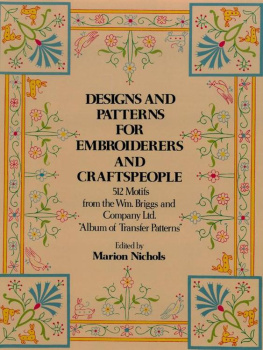



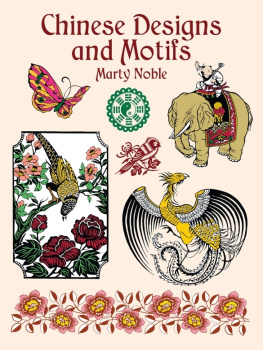


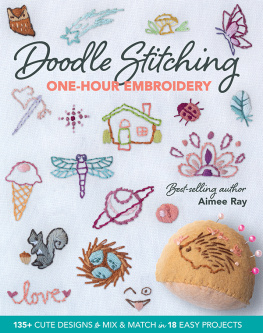
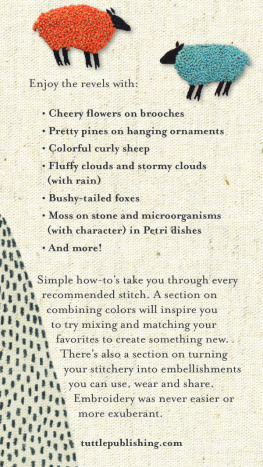

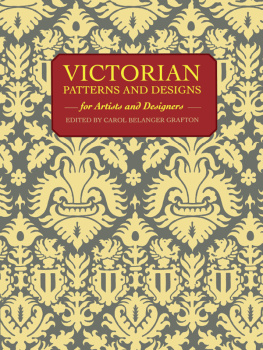
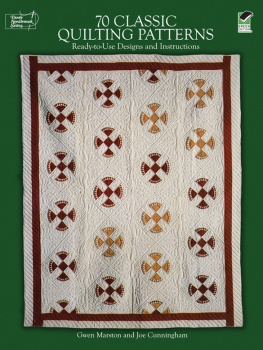
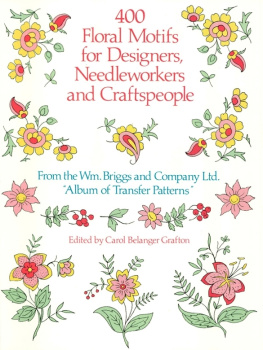
 Copyright 1974 by Dover Publications, Inc. (0-486-23555-6) See every Dover book in print at
Copyright 1974 by Dover Publications, Inc. (0-486-23555-6) See every Dover book in print at